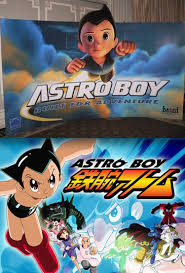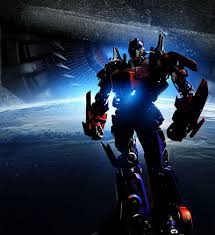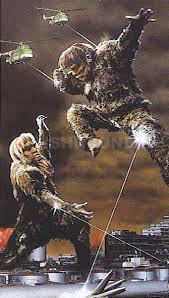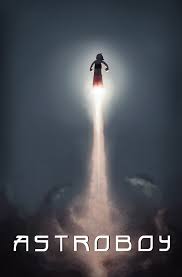


I took my daughter to see Astro Boy on Friday; I watched the DVD of Transformers: Revenge of the Fallen yesterday. "Vacuous spectacle," some might say. "Formulaic pap." "Full of sound and fury..." (kindly fill in the rest). Quality aside, movies such as these raise a larger, equally vital question: How long can we keep mining Japanese pop culture?
From Godzilla to Speed Racer to Pokemon, we seem to have a bottomless appetite for anything Japanese, ranging from the icons of our youth to obscure anime (my daughter, for example, is a fan of the manga Mermaid Melody). Do the Japanese have a special touch with this sort of stuff? Or is it just that, as major trading partners for the past 60 years, we've imported an array of cultural gewgaws along with the autos, electronics, and Kobe beef?
Seems to me that Hollywood is going farther and farther afield to adapt "known" characters, bankable properties. (One can surmise that the studios won't be satisfied until they've made a big-budget version of every Saturday morning cartoon. Similarly, one can be assured that any redeeming qualities the original might have had, no matter how slight, will be pureed into mush after passing through the Tinseltown Cuisinart).
In the Hollywood formula, you combine one part name recognition with two parts built-in audience. Add a dash of minimal risk and you've turned a beloved novelty into a lurching, bellowing, booming "entertainment."

Take Astro Boy. Astro Boy was first published in 1952, then became a television program in 1963. (Is it just me or does the early Astro Boy bear a striking -- and disconcerting -- resemblance to Betty Boop?)
 Yes, Astro Boy was popular... among the elementary school set... in his day. (How many moviegoers remember him from the '60s? And would rush out for an updated, CGI version?) And, granted, Astro Boy may have been a trail-blazer -- Wikipedia claims that "Astro Boy is the first Japanese television series that embodied the aesthetic that later became familiar worldwide as anime." And, yes,
Yes, Astro Boy was popular... among the elementary school set... in his day. (How many moviegoers remember him from the '60s? And would rush out for an updated, CGI version?) And, granted, Astro Boy may have been a trail-blazer -- Wikipedia claims that "Astro Boy is the first Japanese television series that embodied the aesthetic that later became familiar worldwide as anime." And, yes, In 2007 and 2008, Cartoon Network began broadcasting and webcasting NBC's syndicated edition of the original 1960s episodes as a part of its late night Adult Swim line-up.So a younger audience may be familiar with him. All well and good. But, nearly 50 years after his debut, is Astro Boy worth the star treatment? What are today's filmmakers adding to it? Where's the distinctive imprint or spin?
And what about the Transformers? The millennia-spanning clash between Autobots and Decepticons. The primal, Manichaean struggle between good (Optimus Prime) and evil (Megatron).
 Wikipedia again:
Wikipedia again:The Transformers began with the 1970s Japanese toy lines Microman and Diaclone. The former utilized varying humanoid-type figures while the latter presented robots able to transform into everyday vehicles, electronic items or weapons.We know them best from the Transformers TV series in the '80s. But, again, you'd think this juvenile fare (don't forget: these are based on toys) would speak to folks born in the '70s... and now in their 30s.
Let's face it: kids and teens weren't even alive when these characters had their day in the sun. But, when you combine a massive marketing budget with the fact that kids' parents -- and grandparents -- remember these characters, you're going to fill seats in the cinema.
With Transformers: Revenge of the Fallen, you're also getting
- State-of-the-art eye candy -- a non-stop blur of movement and color (and noise) that appeals to the two-year-old in each of us (what some may characterize as a "roller coaster ride in an abusement park")
- Carnage on an epic scale (time to sink an aircraft carrier, time to demolish a pyramid)
- Battling giants (that perverse playground thrill of watching the two biggest brutes in the class having a slug-fest... all hunky-dory as long as you're at a safe distance, removed from the melee)

Or a personal favorite like War of the Gargantuas (1966) about
two giant, hairy humanoids called Gargantuas, which [were] spawned from the discarded cells of Frankenstein's monster from the previous film [Frankenstein vs. Baragon] and are described as brothers. The Green Gargantua is violent and savage, preying upon human beings; as he lives in sea water, he is given the name Gaira... corresponding to [the] Japanese characters for "sea". The Brown Gargantua had been raised in captivity, and is docile and gentle; because he resides in the Japan Alps, he is called Sanda (from san, "mountain"). The film follows the investigation and military engagements of these creatures until their climatic confrontation in Tokyo.Huge, furry Frankensteins smashing Tokyo -- now that's a story. (Not to mention -- this is Russ Tamblyn's claim to fame after West Side Story and Seven Brides for Seven Brothers.)

Maybe it's not a burnished, awe-inspiring "event." But it's still a hoot (gotta love those psychedelic gorilla suits). Even without a billion-dollar budget, a three-hour running time, brain-numbing effects, and -- lest we forget -- Megan Fox.
Watch this trailer for War of the Gargantuas and tell me, honestly, if War of the G's -- in all it's loony, cheesy glory -- doesn't give Transformers: Revenge of the Fallen a run for its money.

No comments:
Post a Comment